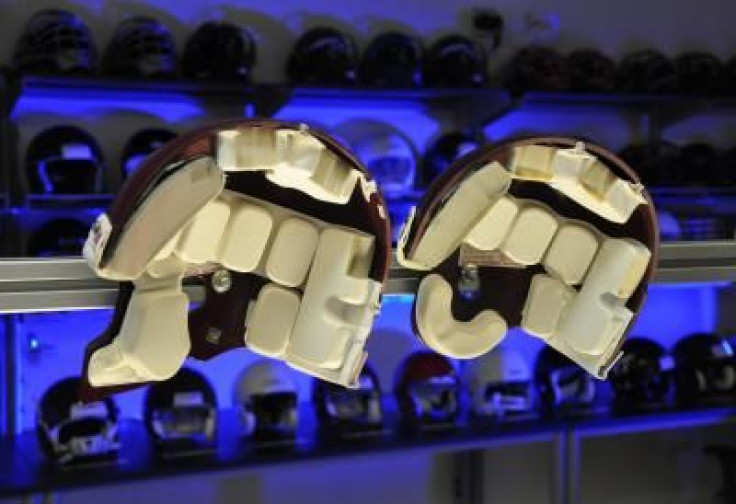New Riddell Football Helmet May Lower Concussion Risk: Could It Solve The NFL's Traumatic Brain Injury Problem?

Earlier this week, former Detroit Lions running-back Jahvid Best filed a lawsuit against the NFL and the sporting equipment company Riddell due to concussions he suffered throughout his career — concussions Best said led to the early end of his career. A study published in the Journal of Neurosurgery found that a new type of football helmet designed by Riddell could significantly decrease a player’s concussion risk.
"This is the first study to control for the number of times players hit their heads when comparing helmet types," lead researcher and assistant professor in the Virginia Tech, Wake Forest School of Biomedical Engineering and Sciences, Steve Rowson, said in a statement. "No previous study has been able to account for this variable. Controlling for head impacts allows you to compare apples to apples. For example, you're not comparing a player in one helmet who rarely gets hit to a player in another helmet type who frequently gets hit."
Rowson and his colleagues recruited 1,833 players from eight NCAA division I football teams including: Virginia Tech, University of North Carolina, University of Oklahoma, Dartmouth College, Brown University, University of Minnesota, Indiana University, and University of Illinois, between the 2005 and 2010 seasons. Each player was asked to either wear a Riddell VSR4 or Riddell Revolution helmet fitted with sensors designed to measure the biomechanics of head impacts.
Sensors fitted into each helmet’s design calculated head acceleration following a hit the player would sustain during a game. The helmet that lowers head acceleration after an impact is also the helmet that lowers the player’s risk of a concussion. After analyzing more than 1,800 players over the course of six seasons, the research team found that the Riddell Revolution helmet caused incidences of lower head acceleration compared to the VSR4. The Revolution’s ability to control energy transfer following a blow to the head is also what allows it to lower head acceleration. Wearing this helmet reduced the player’s risk of suffering a concussion by 54 percent.
"While some helmets will reduce risk more than others, no helmet can eliminate risk," explained Stefan Duma, head of the Virginia Tech, Wake Forest School of Biomedical Engineering and Sciences. "The most effective strategies are altering league rules and teaching players better techniques. These strategies focus on reducing the number of head impacts that players experience. However, head impacts in football will always occur, even with the best rules and technique. This is where improving helmet design to best reduce concussion risk becomes critical. Our data clearly demonstrate that this is possible.”
Although this most recent study shows promising steps in the field of sports concussions, Rowson and Duma warned that no helmet will ever be able to prevent a concussion with 100 percent accuracy. According to the American Academy of Pediatrics , concussions sustained by high school athletes result in 144,000 trips to the emergency room each year. Approximately nine percent of all high school athletic injuries are attributed to concussions.



























